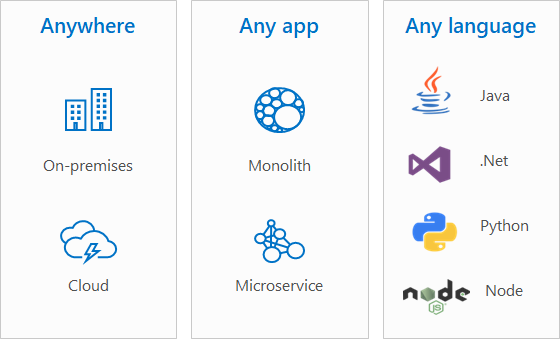
- #Docker for windows kubernetes how to
- #Docker for windows kubernetes install
- #Docker for windows kubernetes series
implement caching and throttling in one place only,.There are many benefits to using the gateway pattern and having only one entry into your backend, for instance: Even better, I would also recommend implementing the gateway pattern in between, so as not to call the API directly from the web application but instead using the Azure API Management in between, or Ocelot or something similar, and then letting these services to route your request to the target API. Of course, you should never do that in a real-world application, I strongly recommend creating the Web API (or some other API) the way you usually do it, and then call them from you web application. In order to test our work, we are going to simply send a request using the Postman directly to the microservice. Looking at Figure 1.0 above, we are going to create what is in the right-most box that reads Docker/Kubernets, we are not going to be creating the web application, or the APIs, because this is very simple and I am sure that you have done it many times before. Then, we shall move everything to Azure Container Registry and Azure Kubernetes Services, and then in the third post we’ll see how we can utilize Azure Service Bus to support distributed communication between the microservices, and why is that important.
#Docker for windows kubernetes series
Since this is the first post in a series of several of them, we shall create this locally only. So this is what we should create in this post: I am a strong believer in creating something real-life alike, because otherwise the talk is just cheap and too much theory becomes….well, too much theory. You can consider it as an orchestrator of all microservices you are creating.

Also, if you want to have some kind of redundancy and run some of the services with mutiple instances, but also to be able to have something like zero-outage deployments of new versions of those microservices: well for this and much more, we come to the role that Kubernetes plays. After you create a number of services, it can become a hassle to manually coordinate everything. This provides for a clean separation of work between different teams, that can use very different technologies for their work, and it is still possible to work on the same project seamlessly.
#Docker for windows kubernetes install
Without installing all specific services and infrastructure on your machine, pushing your code to the version control and then explaining to all other teams that work on the same project what they need to install on their dev machines in order to make it work, we just package everything in the containers and publish the container, so that others can connect and use it, in different environments. Here’s where the microservices come into place.


The short answer is: if you have anything but a simple few-page web application, you need to have some kind of backend to support it. The code for this post can be found here: If anything seems unfamiliar or not clear enough, please ask a question in the discussion forum.
#Docker for windows kubernetes how to
I will skip much of the theory in this post, or trying to convince you why you should take this route, but will mainly focus on how to get up running microservices in Docker and Kubernetes as quickly as possible. It has never been easier to create microservices than today, with the inception of containerization and various powerful orchestrators, such as Kubernetes.

Next post: Microservice with Docker and Kubernetes (2 of 3)


 0 kommentar(er)
0 kommentar(er)
